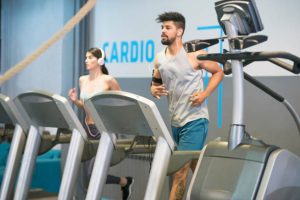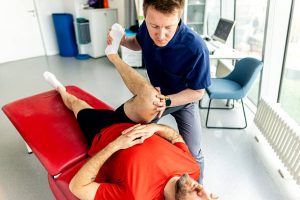Living with chronic pain can feel like carrying an invisible weight every day—a constant reminder that something isn’t quite right in your body. Whether it’s a dull ache, sharp discomfort, or persistent stiffness, chronic pain can impact every part of your life, from your mood to your ability to enjoy simple activities.
At Allegiance Physical Therapy, we understand how overwhelming chronic pain can be, and more importantly, we know there’s hope. Physical therapy isn’t just about quick fixes—it’s about understanding the root causes of your pain and helping your body heal in a sustainable, effective way.
Here are the top five causes of chronic pain and how physical therapy can make a difference.
1. Arthritis
Arthritis is a common cause of chronic pain, especially in older adults. It happens when the joints become inflamed or damaged, leading to stiffness, swelling, and difficulty moving. Osteoarthritis, the most common type, occurs when the cartilage that cushions joints gradually wears away.
Physical therapy helps by strengthening the muscles around the affected joints, improving flexibility, and reducing pressure on the joints. Therapists use tailored exercises and hands-on techniques to ease pain and maintain or even improve your range of motion, allowing you to stay active and independent longer.
2. Back Pain
Chronic back pain affects millions and can stem from many issues—herniated discs, poor posture, muscle strain, or spinal degeneration. Because the back supports so much of your body’s weight, even small imbalances or injuries can lead to persistent discomfort.
Physical therapy focuses on correcting posture, improving core strength, and teaching safe movement patterns. With targeted exercises and manual therapy, therapists reduce muscle tension and spinal stress, which can dramatically decrease pain and prevent future flare-ups.
3. Nerve Damage or Neuropathy
Conditions like sciatica or diabetic neuropathy cause nerve pain that can feel like burning, tingling, or numbness. Nerve pain is often misunderstood and difficult to treat, but physical therapy offers hope by addressing the sources of nerve irritation and helping improve mobility.
Therapists use specialized techniques to reduce inflammation around nerves and educate patients on posture and body mechanics that minimize nerve compression. Gentle nerve gliding exercises can also help restore normal nerve function and reduce discomfort.
4. Fibromyalgia
Fibromyalgia is a complex condition characterized by widespread muscle pain, fatigue, and sensitivity to touch. The exact cause is unknown, but it’s believed to involve the way the brain processes pain signals.
Physical therapy plays a vital role by focusing on gentle, low-impact exercises that improve blood flow, reduce stiffness, and boost mood. Therapists also teach relaxation techniques to help manage stress and improve sleep, both crucial for managing fibromyalgia symptoms.
5. Injuries and Repetitive Strain
Chronic pain can also result from old injuries or repetitive strain—think of an athlete’s overused shoulder or someone with chronic wrist pain from typing. When injuries aren’t fully healed or overuse continues, pain can become persistent.
Physical therapy helps by identifying movement patterns that contribute to strain and guiding patients through rehabilitation exercises to restore strength and flexibility. Therapists also offer advice on ergonomics and body mechanics to prevent further injury.
How Physical Therapy Makes a Difference
Chronic pain can feel like a battle, but physical therapy is about giving you the tools to win. Instead of just masking pain with medications, physical therapy addresses the underlying causes, empowering you to move better and live fuller.
By combining hands-on treatments, customized exercises, education, and lifestyle advice, physical therapists at Allegiance Physical Therapy help break the cycle of pain and rebuild your body’s natural resilience.
If chronic pain is holding you back, remember—you don’t have to face it alone. With the right care, relief and renewed strength are within reach.







